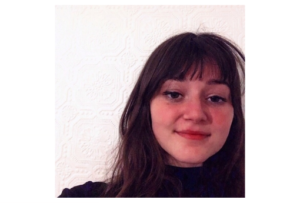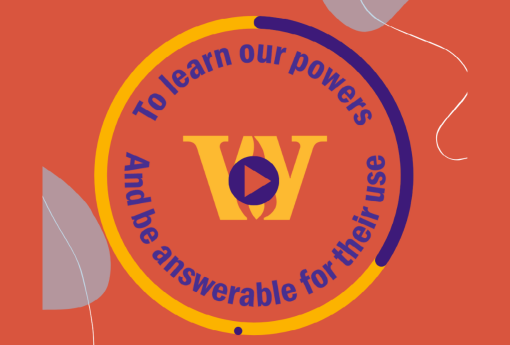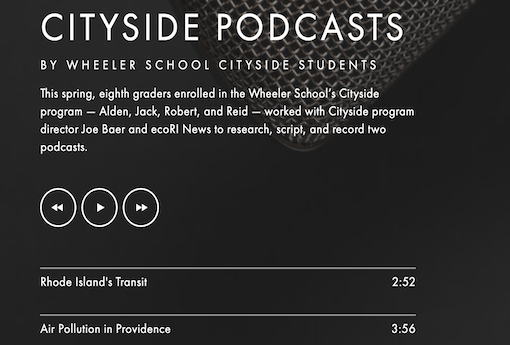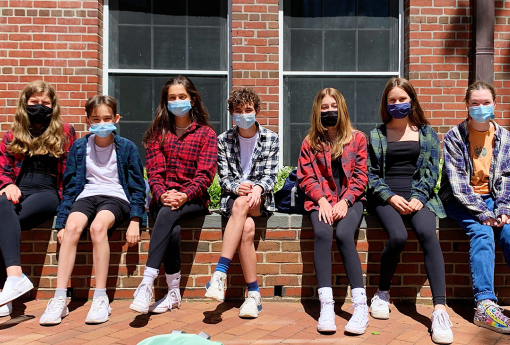
Learning About Land Acknowledgment Spurs Student Ideas
October 6, 2020
The great force of history comes from the fact that we carry it within us — James Baldwin
Thanks to a multi-class project led by History Department Chair Sarah Palomo (SP), junior Ruby Goldstein ’22 (RG) shares her thoughts regarding ways The Wheeler School can acknowledge the tribal lands on which its two campuses are located. Learn how you can also do more to acknowledge the indigenous history of your area through similar ideas and resources within this blog.
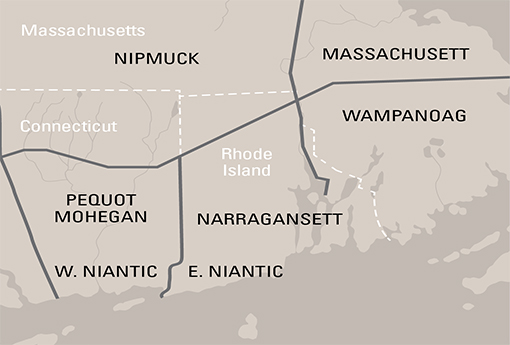
History Class Project
SP: After beginning the year by exploring the indigenous history of the land Wheeler occupies (using this Native Land map), we asked US History students to craft a proposal for how Wheeler should acknowledge this history on one or both of its campuses (Providence — Narragansett land) and Seekonk — Wampanoag land). Students’ proposals could take many forms: a written acknowledgment statement that might appear on the website or be displayed publicly, an art installation, a series of institutional commitments. We asked students to think critically and creatively about the purpose of a land acknowledgment, to read guides developed by indigenous leaders such as #HonorNativeLand and the Tomaquag Museum Guide for Land Acknowledgements, and to draw inspiration from James Baldwin’s reminder that “the great force of history comes from the fact that we carry it within us.” Here is one proposal that emerged from this project.
A Student Proposal
RG: What is a land acknowledgment? A land acknowledgment is basically an acknowledgment of the continued oppression of Indigenous peoples that non-Indigenous people perpetuate by going to school, working, and living on stolen land. There are two purposes of land acknowledgments: to educate and cause self-reflection in non-Indigenous people and to serve Indigenous people. The land acknowledgment itself should be just one part of a more expansive list of things to do to reach both of these goals: the actual drafting of the statement should be taken seriously and thoughtfully, but without adequate actions to accompany it, it is hardly worth writing.
This is my expanded list of mutually beneficial and long-term things that I strongly believe Wheeler should implement to educate people within the school’s community and benefit people outside. And let me be clear, none of the ideas are in place and discussions about them are only just beginning. I hope to work with Wheeler’s Equity Task Force to help find some form of implementation. That being said, these are not just ideas that should be discussed but instead actions that should be taken; these should be done not for good press or out of the kindness of our hearts but because we owe Indigenous people at least this much.
- There should be a traditional Native foods day once a month.
- We should grow more Native foods at the Farm.
- Local and national Native educators should be brought in (and financially compensated) to have an open, honest, and respectful lecture/discussion about their traditions, history, and current events.
- The Isenberg Auditorium and Wheeler Memorial Hall should be free for Native groups to use for hosting events and discussions.
- Part of the Farm should be set aside and offered to local tribes as a space that they could plant, do rituals, convene on, or use as they see fit/helpful.
- If there is money made from the solar panels on the Field House at the Farm, it should be donated directly to local elders who cannot afford to pay their heating bills, which is an ongoing issue.
- There should be a yearly art show in the Chazan Gallery specifically for Native artists, which local tribes should be told about and encouraged to apply to.
- All humanities classes should be adjusted in scope so we don’t just have one day where they talk about how they don’t talk about Native history.
Finally, and possibly most importantly, there should be at least one completely paid scholarship for a local Native person to go to Wheeler. This scholarship should carry with them all the way until graduation. Once the student leaves and the scholarship is open, Wheeler should inform local tribes and encourage families to apply. There should never be any token photos of this student on the website, nor should their peers know that they are a scholarship recipient. Native people are the most impoverished demographic in nearly every single state, and giving someone a better education than they otherwise might have had access to could change their life.
Once Wheeler has implemented some tangible changes in the way that it talks about and treats its own history and the role it has played in upholding systems of white supremacy and the continuation of gentrification of Providence, then we can put up a plaque.
Notes and Resources
1. This is not a perfect list and things should be amended and added as needed.
2. When a plaque is put up, it should be written in Narragansett and Wampanoag too.
3. If a piece of public art is put up related to land acknowledgment, it should be designed by a Native person.
4. You do not need to put a land acknowledgment in your email signature or in your holiday card because that only serves your own feelings of political correctness and does not help prevent further racism and oppression.
5. For more information about the history of Rhode Island and current Indigenous projects please see the following links:
http://narragansettindiannation.org/history/early/
http://narragansettindiannation.org/history/perseverance/
http://narragansettindiannation.org/history/historic-preservation/
https://www.tomaquagmuseum.org
http://www.narragansettfoodsovereignty.org/about.html
6. If you are drafting a land acknowledgment or are just interested in learning more about them generally, please read The Tomaquag Museum’s Guide
